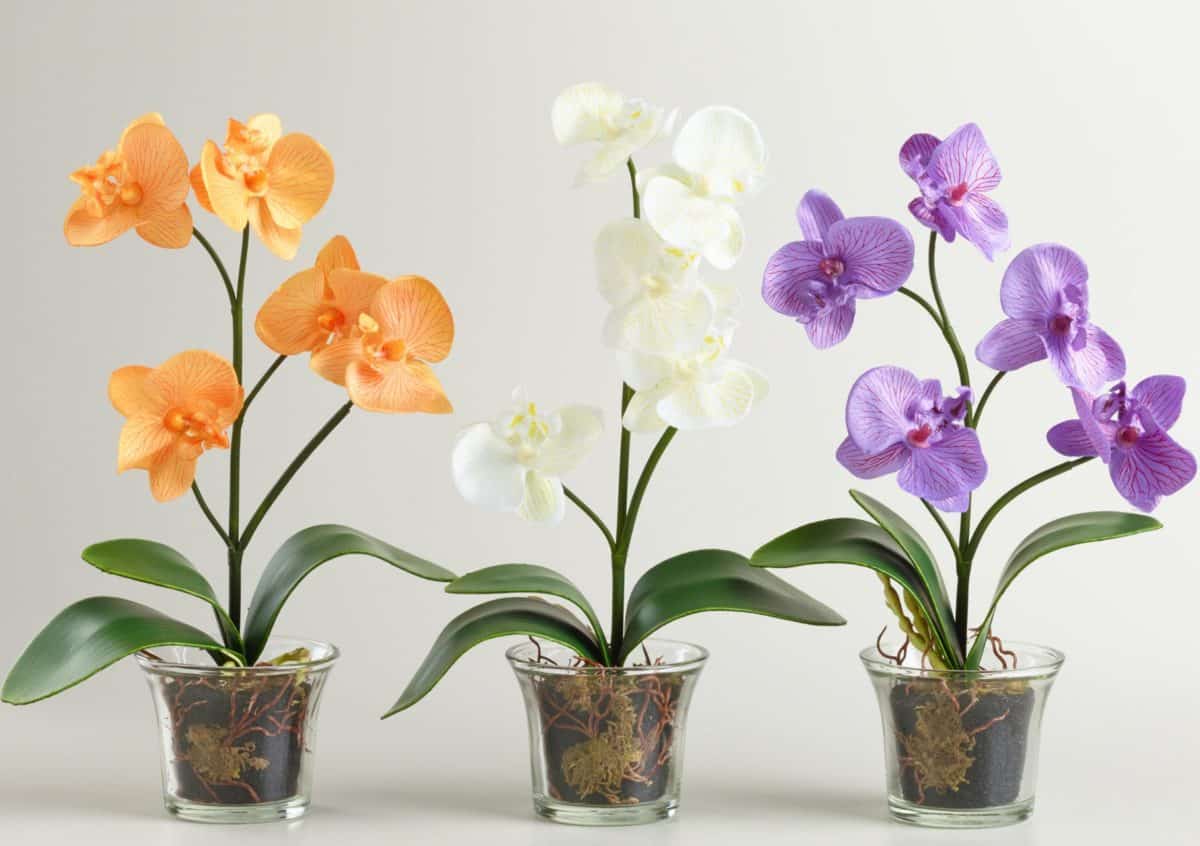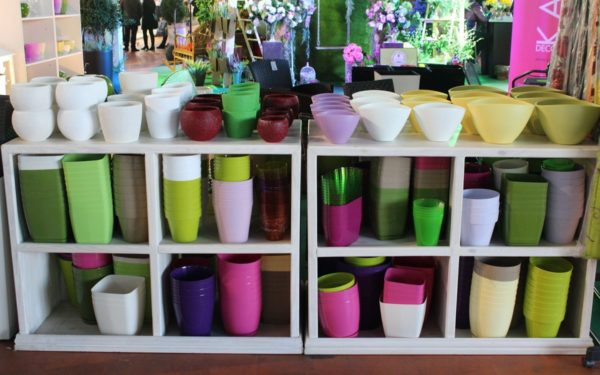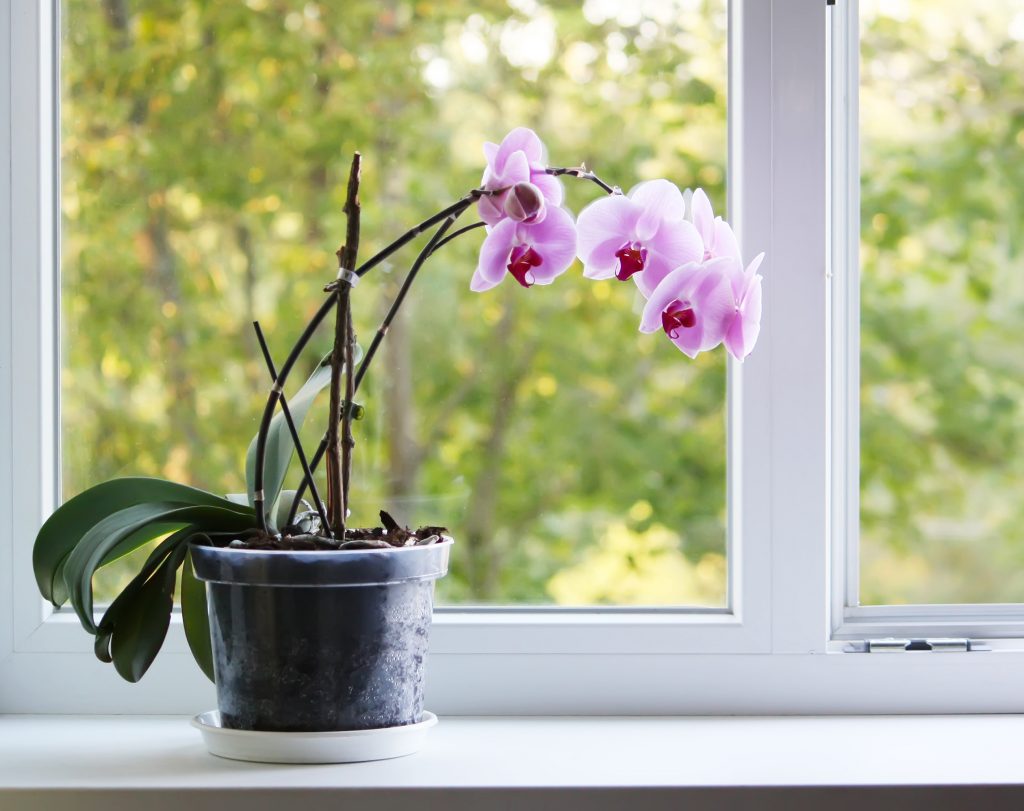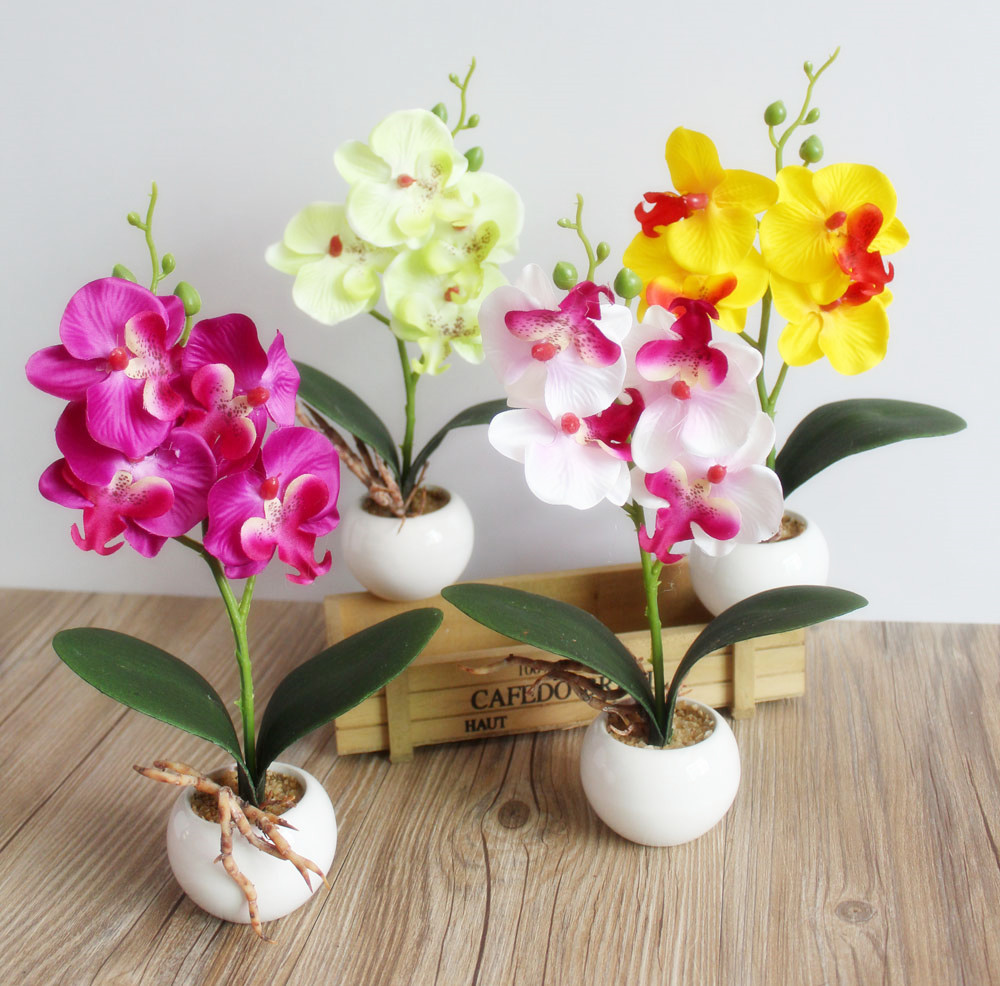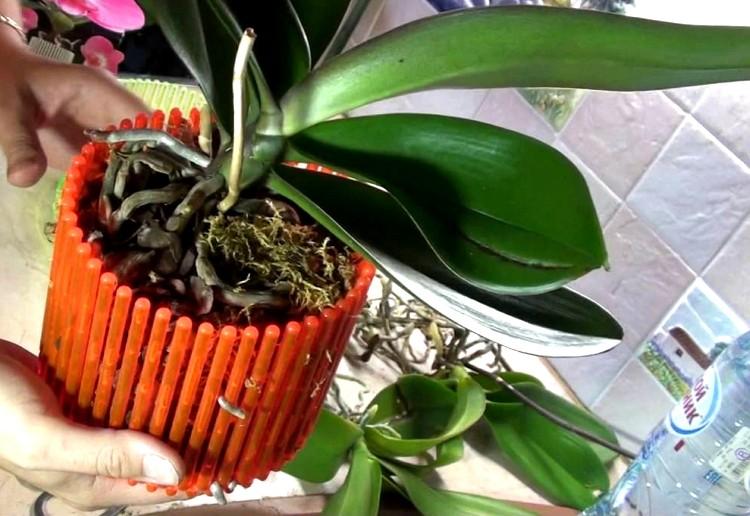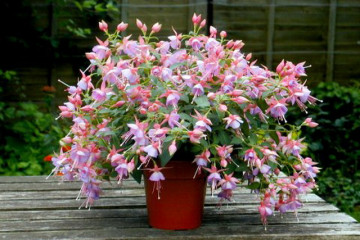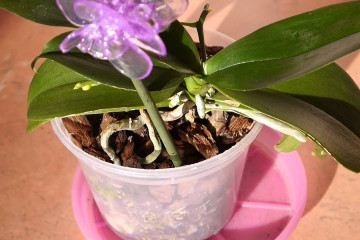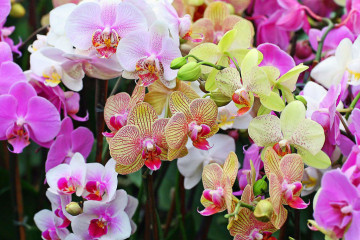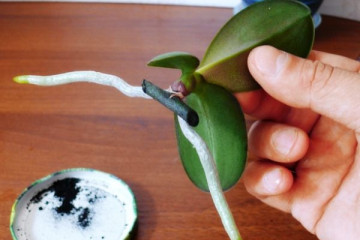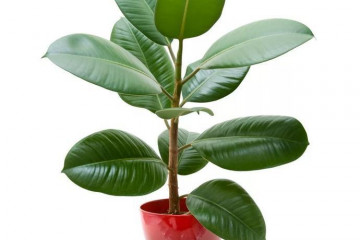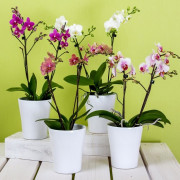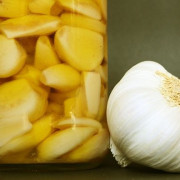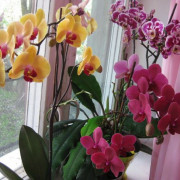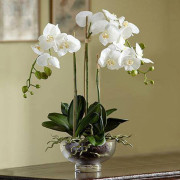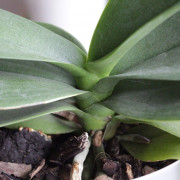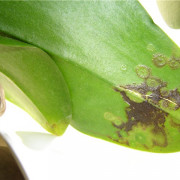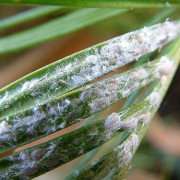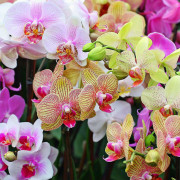Orchid pot - which one is better to choose
Content:
When choosing a pot for a houseplant, most people start from aesthetic preferences, the size of the flower and its root system. But with orchids, everything is more complicated. How to choose a pot for an orchid will tell its exotic origin. It is difficult to recreate conditions close to natural, and the plant has to adapt, and the task of the grower is to make this process easier.
What kind of pot is needed for an orchid
Before deciding which pot to plant an orchid in, you should understand that the main task is to bring the conditions for growing a flower in an apartment as close as possible to natural conditions. The container serves as a supporting function, it supports and directs the growth of the flower. The roots of the plant stick to the substrate and the walls of the pot, just like trees in nature. In addition, the capacity and substrate protect the plant roots from drying out.
Basic requirements for containers
When choosing utensils for keeping an orchid, each grower chooses his own approach. Some people choose to grow the plant in blocks or in a closed system, while others choose a pot.
When choosing a suitable vessel for an orchid, you should pay attention to the following criteria:
- The container must contain a sufficient number of drainage holes so that the roots of the epiphytes can breathe freely.
- The transparent material of the pot is more important for ease of maintenance, as it allows you to control the dosage of watering, monitor the condition of the roots and the phase of plant development.
- The orchid loves containers for the size of the root system. If the roots of the plant are healthy, then when transplanting, take a larger container with a margin for growth. Sick flowers with damaged roots need a pot end-to-end, since a large amount of substrate will lead to stagnation of moisture and decay of the roots.
- Which pot to take depends on the type of plant. Phalaenopsis prefer transparent containers, for vanda it is better to choose glass, for epiphytes with pseudobulbs, ordinary ceramic containers are suitable.
Humidity and temperature in and around the pot
Epiphytes do not tolerate waterlogging of the root system. Therefore, when choosing a container for a flower, you need to make sure that there are drainage holes on the bottom and bottom of the dishes. In the absence of such holes, it is worth carefully monitoring the moisture content of the substrate. Moisture stagnation can lead to mold on the roots of the orchid and its death.
In the absence of air circulation near the root system, the upper shell of the roots begins to rot and the plant does not receive the required amount of moisture and microelements.
The correct temperature regime is maintained thanks to the material from which the pot is made. It should not contribute to overheating or hypothermia of the root system.
Some orchid vessels are equipped with an automatic watering system, which allows you to control the moisture of the plant substrate. Such a self-irrigation system is suitable when it is not possible to devote much time to the plant, for example, while on vacation or on a business trip.
Transparent plastic pots
On sale, basically everything, orchids come in plastic transparent pots for transportation. This container has several advantages:
- this is a budget option and it is easy for the seller to monitor the watering of the plant through transparent walls;
- the roots of epiphytes practically do not stick to the plastic and, if desired, it is easy to remove it for reproduction or transplantation;
- The root system of most orchids synthesizes light in the same way as the leaf of a plant, so a transparent container will provide access to light rays to the roots.
The advantage of plastic containers is that you can make additional holes along the walls or bottom of the container yourself. This is perfect for a flower. The disadvantage of such a vessel is that it is very light and unstable. To avoid overturning the plant, it is enough to choose a stable orchid planter.
In addition to ordinary white plastic pots in a flower shop, you can choose a plastic flowerpot that fits the interior of a home or office, of any size or color, it can be either transparent or matte.
Clay and ceramic pots
Compared to plastic containers, these types are more stable and aesthetic. The porous structure of the material gives the necessary moisture and air exchange to the root system, but at the same time is the reason for the development of flower diseases. Over time, the roots stick to the surface of the pot and, if you want to transplant the plant, they are injured, which leads to damage to the orchid. Also, moisture during watering evaporates through the pores and leaves salts on the walls that are harmful to the health of plants.
For safe plant care, it is better to choose pottery with a glazed inner surface, then the roots cannot grow to the surface.
When choosing glazed dishes that look attractive, do not forget about the presence of a drainage system, without which the plant will not live long. An important point when choosing a ceramic flowerpot is the shade of the container itself. The best option would be light-colored dishes - this will help protect the plant from overheating the roots in the summer at elevated air temperatures.
Pottery or clay pots are more suitable for terrestrial orchid varieties. Having bought just such a pot, the plant will feel as close as possible to its natural habitat.
Glass pots
In glass vases, the orchid looks quite aesthetically pleasing. Such containers are quite practical in terms of benefits for the plant's root system, as they provide a good amount of light to the roots.
But among flower growers, opinions on the use of this particular material for growing a plant were divided. On the one hand, this method helps to retain moisture in conditions of low environmental humidity, but on the other hand, a closed container without drainage is a bad option for a plant.
Due to the accumulation of condensation on the walls of the flowerpot, the growth of green algae develops on the roots of the orchid. Replacing the substrate 2-3 times a year will help get rid of such a problem.
For beginners and amateurs, it is better to choose glass vessels that have at least one hole for air and moisture circulation.
Hanging planter
It is quite difficult for a plant to create conditions that resemble natural ones at home.This can be done using decorative vessels - pots. An ordinary pot with a plant is placed in such containers, in them, most often, there are no additional holes for the outflow of water, so the pots can be hung on the wall and not worry that water will drip onto the interior items during watering.
There is a wide variety of types of pots:
- plastic, can be with or without holes, transparent and matte;
- glass;
- ceramic;
- baskets made of wood, plastic or metal.
All of them are suspended with ropes, fishing lines, cables, or mounted on supports or stands.
Most often, mini and midi varieties are placed in pots, but some indoor plant lovers are ready to keep large specimens in this way.
Unusual orchid pots
Recently, flower growers are increasingly choosing the plastic crown for orchids for their green spaces. It is a continuous structure made of transparent plastic flexible rods. The rods are arranged in a circle with small gaps to hold the soil. A special double pallet is included with such containers, which can be used to create drainage; the presence of special fasteners allows you to hang the plant in a pots.
This type of container has a large number of advantages, including the provision of light for photosynthesis, good ventilation, and the original style of the product.
Despite the merits, there are some drawbacks to such a pot. Through the large holes of the container, the substrate can pour out into the pan and then the roots will germinate through the pot. For the same reason, moisture evaporates much faster and it becomes necessary to create additional conditions for water retention. During transplantation, problems may arise related to damage to the root system of the flower, as the roots can grow through the walls of the Crown.
DIY orchid pot
To give originality to the vessels in which orchids are grown, inventive flower growers are ready to make flowerpots with their own hands. It can be wicker baskets, gypsum flowerpots of fancy shapes. Some people prefer to plant the plant in a regular large coconut. There are a lot of options for creating a homemade pot - it all depends on the imagination of the creator.
Such self-made structures have one significant drawback - a rough surface, to which roots can grow, which will cause problems when you need to replant the plant.
Growing an orchid at home is an art, as a result of which a florist gets a spectacular flower. A properly chosen pot is an important point in plant care, which will ensure health and full development.
